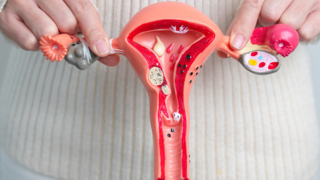In this article:
Strategies For Easier Labour and Delivery
Have A Birthing Discussion
You've heard about the significance of having a birth plan—but, at the end of the day, labour and delivery cannot be controlled, let alone "planned" for. Having a birthing talk or writing down your birth preferences could be a better way to think about it.For example, talk about who you want to be with you in the birth room (family member, partner). Whatever you pick, be sure the people you invite are trustworthy and can make you feel better—and that your hospital allows that many people in your room.
Other topics to discuss include your expectations for immediate skin-to-skin contact after delivery, your desire to avoid c-sections and episiotomies unless necessary, your preference for delayed cord clamping, your pain management options, and what happens to your newborn immediately after birth.
Once you've written down your wishes, discuss them with your doctor long before your due date to avoid surprises. There are often medical indications for certain care, and discussing it with the patient helps clarify some of the items they may not fully understand when they write it down. For example, if you truly wanted to videotape the birth, it might not be possible because many hospitals prohibit it without previous written authorisation due to medical and legal concerns. Knowing this ahead of time can alleviate a lot of unnecessary tension.
Some women also attend Lamaze or similar childbirth classes, where they learn what to expect during labour and delivery and how to manage discomfort properly. Childbirth education classes teach you about your options during childbirth. Understanding the childbearing process can also help to alleviate anxiety and fear.
Aside from medical topics, have logistics figured out. Take a hospital tour so you know where to go when the big day arrives. Because you cannot predict when you will go into labour, you should talk with your partner about how you will travel to the hospital if you are alone.
Exercise During Your Pregnancy
Women require endurance and strength to get through labour and delivery. Fortunately, establishing an exercise routine can help. In fact, Dr. Rani Koppula, DGO at MS General Surgery, Gleneagles Hospitals, recommends that expectant mothers undertake at least 150 minutes of moderate activity per week. Regular exercise can also help reduce excessive oedema and weight gain during pregnancy.Prenatal yoga, swimming, Pilates, and even cardio can all be effective pregnancy workouts. Ignore the previous advice to never boost your heart rate above 140 beats per minute; specialists now claim it's unnecessary. Instead, make sure you don't work out so hard that you're out of breath or unable to complete a sentence.
Ask your doctor if you can exercise and what type of routines are best for you. Some expectant mothers may be advised to avoid exercise owing to a condition or complication, and you should always heed medical advice.
Know What To Do During Labour
Consult your obstetrician about how long you should stay at home in the early stages of labour and when you should go to the hospital. You'll most likely spend the first portion of your labour at home, so try to relax as much as possible while there. You don't want to arrive at the hospital exhausted. Ask your partner for a light back massage. Have some small snacks and drink plenty of water as you'll need energy, and you might not be permitted to eat while in the hospital.When your contractions become more severe and you arrive at the hospital, your primary concern is usually pain control and delivery. You understand your options since you have had a birth conversation. In general, mobility can aid with pain. This can include standing (rather than sitting or lying down), swaying your hips, walking, sitting on a birthing ball (to move your hips back and forth or in a circular motion), and taking a shower or soaking in a tub (if your hospital provides one).
If you're lying in bed, find the most comfortable posture; a peanut ball may also assist. Some ladies find comfort in music and aromatherapy. Do whatever works for you.
Be Open-Minded
No matter how much you plan and picture how things will go, they can change in an instant and you must be prepared to adapt alongside them.For example, some expectant mothers are adamant about having a natural birth but are caught off guard when they discover they desire an epidural. It's okay! Labour is different for every woman, and it can't be controlled or planned by the patient or their doctor.
Finally, trust the process. When it's time to push, trust your doctor to tell you when and how hard. Pushing too hard too quickly may result in tears and wear you out sooner.
Childbirth is surely difficult, but remember you are not alone and it will all be worthwhile once you hold your baby in your arms.
FAQs on Must-Know Strategies for an Easier Labor and Delivery
- What is the 411 rule for labour?
Most healthcare experts urge that you visit the hospital if you are experiencing frequent, painful contractions. You may use the "411" guide: Contractions are forceful, come every 4 minutes, last 1 minute, and have been going on for an hour. - How can I push easily when in labour?
Take deep breaths as your contraction intensifies. Then, once it reaches its apex, keep pushing! Some labour trainers advocate that you hold your breath. Some propose exhaling while pushing.











